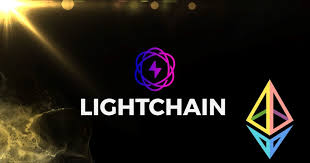
In a transformative shift, Lightchain and Ethereum have united to spark an AI chain revolution, according to industry experts. The seamless collaboration between Ethereum and the pioneer of decentralized AI, Lightchain, is redefining what it means to empower users and developers alike.
Lightchain: The AI-Native Blockchain Takes Center Stage
Lightchain is an innovative project that aims to bridge the gap between artificial intelligence and blockchain technology. Let’s start off with what decentralized AI is all about and why it’s such a huge milestone for Lightchain.
What is Decentralized AI?
Unlike the centralized AI paradigm, which depends on a single authority (like a large tech company) to accumulate data, train AI models, and carry out operations, the decentralized AI paradigm carries out the same functions across a network of nodes rather than relying on a single authority.
Let’s make it simple: with centralized AI you are giving your data to the “single authority” in charge. The authority then decides what to do with the data and how to train AI models with it. The downside? Should the system become compromised, everything stops.
Decentralized AI, on the other hand, does not require being connected to a single authority to function. How exactly? Remember the “nodes” mentioned earlier? Well, it could be a computer, phone, or specialized hardware where the AI is locally trained on your device without sharing raw data.
Why Is This a Huge Deal for Lightchain?
Is Lightchain the first to explore integrating AI with blockchain? No, it isn’t. Early integrations involved using blockchain to securely share and monetize data used in AI training, AI to improve blockchain operations and security, and decentralized inference.
So what makes Lightchain a truly decentralized system? Lightchain embeds AI computation directly onto the fundamental layer of its blockchain. Simply put, AI calculations and decisions can happen directly “on” the blockchain.
Instead of the AI working as an independent party and then communicating results with the blockchain, this integration allows them to work together, leading to enhanced transparency, automation, and smart decisions; enhanced security; and a self-improving system without human intervention.
Other aspects that contribute to the decentralization of Lightchain include:
- Proof-of-intelligence (PoI): Lightchain rewards node operators for AI model training and inference, thereby creating an AI economy where value flows to contributors.
- Artificial Intelligence Virtual Machine (AIVM): This virtual machine within the network runs the AI programs to ensure sensitive data is handled properly and is super private.
- Community-driven intelligence and ownership: Lightchain offers decentralized governance, where users can vote on AI models and suggest changes to ensure the platform evolves in a transparent and fair manner.
A Fusion of Strengths: Ethereum’s Role
Lightchain had the vision of a truly decentralized system; however, it wouldn’t have been made possible without Ethereum’s infrastructure and influence.
- Ethereum pioneered smart contracts. It was the first blockchain to popularize smart contracts, self-executing code that runs on the blockchain. (Sounds familiar?)
- Ethereum is a big advocate for decentralization, transparency, and community action in both words and action.
- Most crypto tokens, especially tokens used by DeAI (decentralized artificial intelligence applications), are built on Ethereum’s ERC-20 standard.
What Role Did Ethereum Play?
Ethereum provided the foundational principles and infrastructure Lightchain used to actualize its vision. For instance, its smart contract capabilities were utilized by Lightchain to facilitate secure, transparent, and tamper-proof AI-driven transactions.
Also, while Lightchain introduces its concept of PoI and AIVM to handle AI-specific computations, it leverages Ethereum’s blockchain as its underlying infrastructure to facilitate secure, transparent, and tamper-proof AI-driven transactions.
Lightchain’s integration with Ethereum allows it to benefit from seamless interaction with other Ethereum-based applications and assets. It also has access to Ethereum’s already established ecosystem, allowing developers to work with familiar tools and environments.
Looking Ahead: The AI Chain Revolution
Lightchain has proven its vision for decentralization as a reality and not just a concept. Its unique synergy with Ethereum to bring this vision to life is changing the dynamics of the role of AI in the current tech ecosystem.
Lightchain and Ethereum are pioneering the cusp of a decentralized, transparent, and community-owned digital world. We can expect new standards for AI auditability, transparency, and autonomy to take hold as the AI and blockchain ecosystems evolve together.

